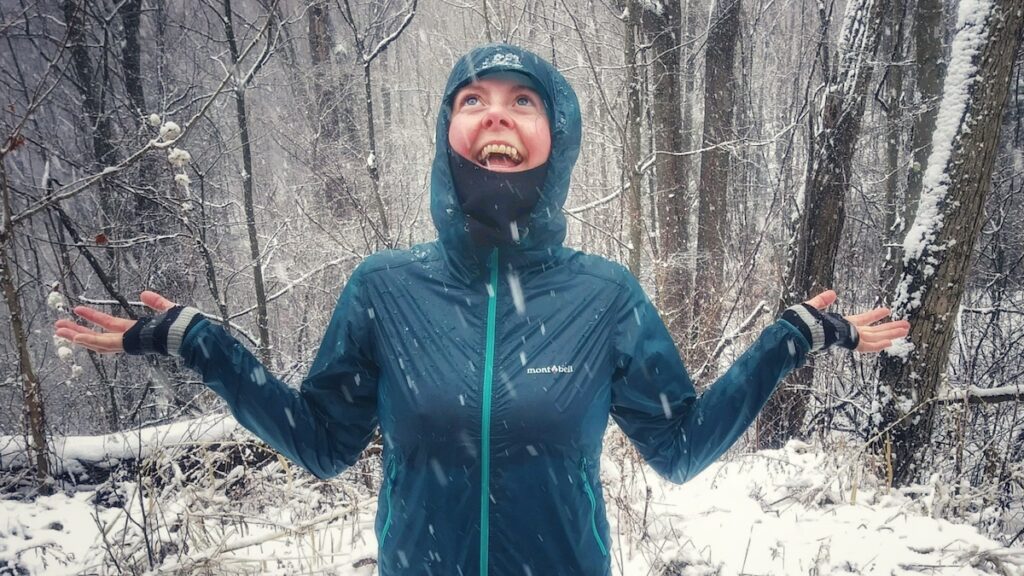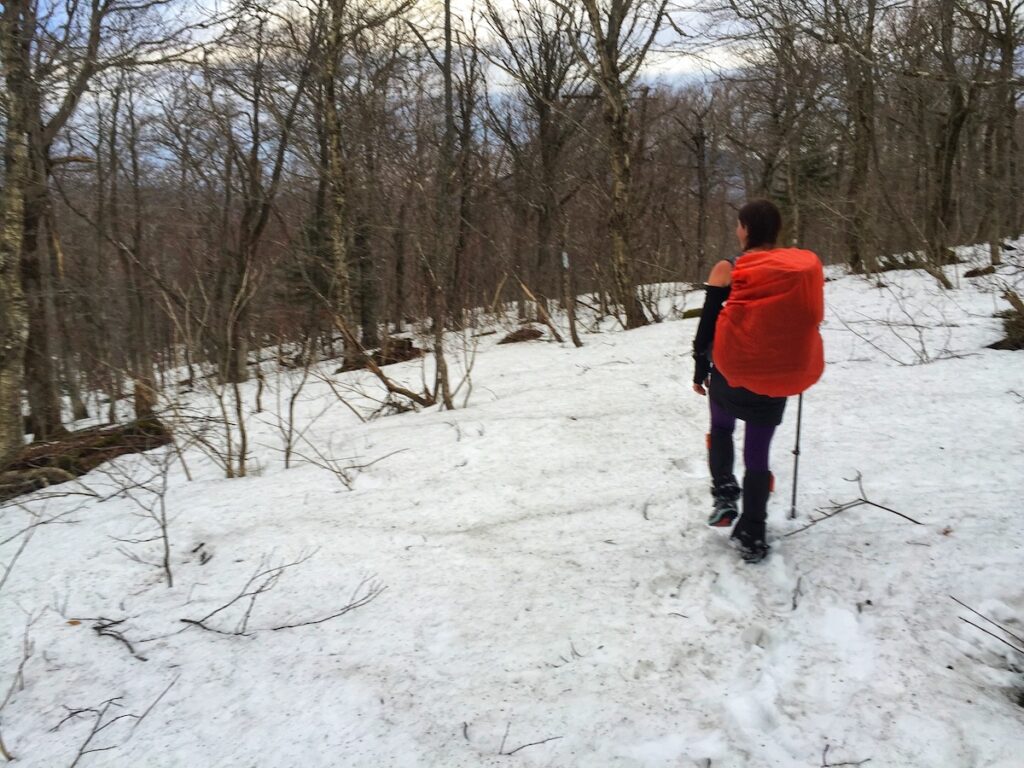Photo credit: Arlette Laan
Most of us head indoors when snow starts to fall and spend our time curled up reading about summer backpacking. This is definitely the safer and more comfortable option! But it is possible to safely enjoy winter backpacking with attention to skill and gear. Below are my top tips for braving winter overnights.
Know your limits. This is perhaps the most important safety tip of all and applies at any time of the year. However, winter is not a forgiving season, even if you only slightly overestimate your abilities. Therefore, in this high consequence season, it is better to always err on the side of caution rather than plot a trip based on the other edge of your ability. This refers to the distance you plan to cover, the speed at which you plan to do it, and also the conditions in which you can remain safe and comfortable. Bear in mind that in the winter there is far less daylight, snow and/or ice may slow your walking pace, and things like getting water, striking/setting camp, and even eating will all take longer. I often hike into the dark hours in summer, but in winter I am in camp before sunset…meaning I may be camped for 16 hours and only walking for 8—nearly the inverse of my summer schedule. This makes it difficult to cover anything close to the kind of mileage I might be used to.
Choose the right gear. This correlates to knowing your limits because having the right gear can determine exactly what conditions you can safely be out in. Most summer backpacking gear is not designed to withstand winter conditions. You will need a four-season rated tent for proper snow shed, a higher R-value in your sleeping pad to ensure your sleeping bag functions optimally and a warmer sleeping bag as well, some sort of traction for your footwear or even snowshoes are often necessary as well. If you’ll be setting your camp up on snow, you’ll need snow stakes and an understanding of how to pitch without risking suffocation. When choosing your layering system and sleeping bag make sure to consult the weather conditions you expect (more on that below). Choose a sleeping bag rated to lower than you anticipate and make sure that your clothing layers account for any precipitation that might happen while you’re out. Practice with your gear at home to make sure it’s functioning the way you want it to before you get into the backcountry.
Check the weather. And check it again. If you use a Garmin InReach or similar device, get updated forecasts sent to you while you’re in the backcountry. Make sure that the weather you’re going out into is weather that you’re properly equipped for. Don’t only consider the ambient temperature, but look at precipitation and windchill as well. These factors can impact the cold perception you experience. It’s also important to understand that weather in cities is usually much warmer than in the mountains. Even a 500-foot elevation change can make a difference of several degrees. You want to be prepared for the weather conditions where you’re headed…not at home.
Have Fail-safes. Just like in the summer, you want to ensure you’ve left an itinerary with a loved one as well as whom to contact and when if you don’t come back on time. Utilizing a GPS beacon, especially one with 2-way communication abilities, is a great way to stay in touch and can be a lifeline if something goes wrong. Winter conditions can hinder a search and rescue dramatically so make sure you have extra supplies in case you’re injured and need to wait for assistance. Additionally, having several route options planned and prepared for in case you need to shorten your trip or get out of the backcountry sooner is always a good idea. Be certain to leave these with your contact person and communicate with them (if possible) if these routes are utilized. Starting easy and local in places familiar to you for short trips is the ideal way to gain winter hiking and backpacking skills. This helps you build your foundation, vet your gear, and practice skills that you can build upon for longer winter adventures.
Winter backpacking can be challenging and rewarding, but it isn’t without significant risk. Take the time to properly prepare and choose your weather windows carefully to ensure you have a safe and enjoyable trip.
















